Continued from the last post!
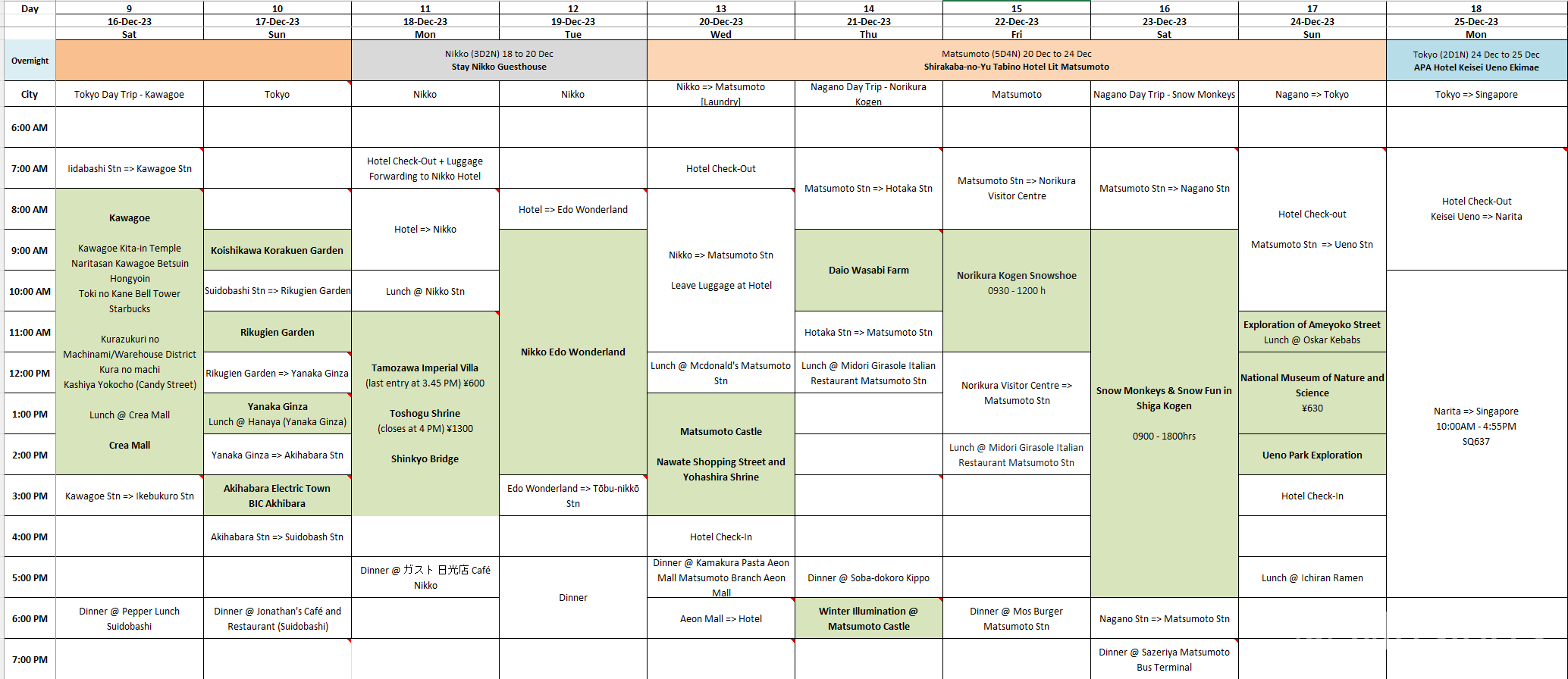
Day 9 (Kawagoe)
Kawagoe – Temples and Kanetsuki-dori Street (2 hrs) [blog post here]: This was another pleasant day-trip that we made out of Tokyo. The place is easy to get to, and it’s also qualifies for filler activities that you swap in and out easily. How much time should you spend in Kawagoe though? We reckon for most visitors, about four hours is more than sufficient, unless it’s your intent to visit every temple, shrine and shop in the Kanetsuki-dori and also Candy Streets. The Starbucks outlet is pretty nice to chill in, but it’s not a big cafe with a lot of seating, and tables get filled with patrons fast, and few seemed to want to just consume their beverages and go.
Candy Street (1 hr) [blog post here]: The shops along Kanetsuki-dori Street were varied but I didn’t find them finally offering wares that were dramatically different from other small towns shopping streets that I’d already been to in the country. The Candy Street though is quite different: the shops in the short street are focused on snacks and sweets. So, if this is your thing, don’t take breakfast if you’re visiting in the morning, and go from shop to shop and try everything!
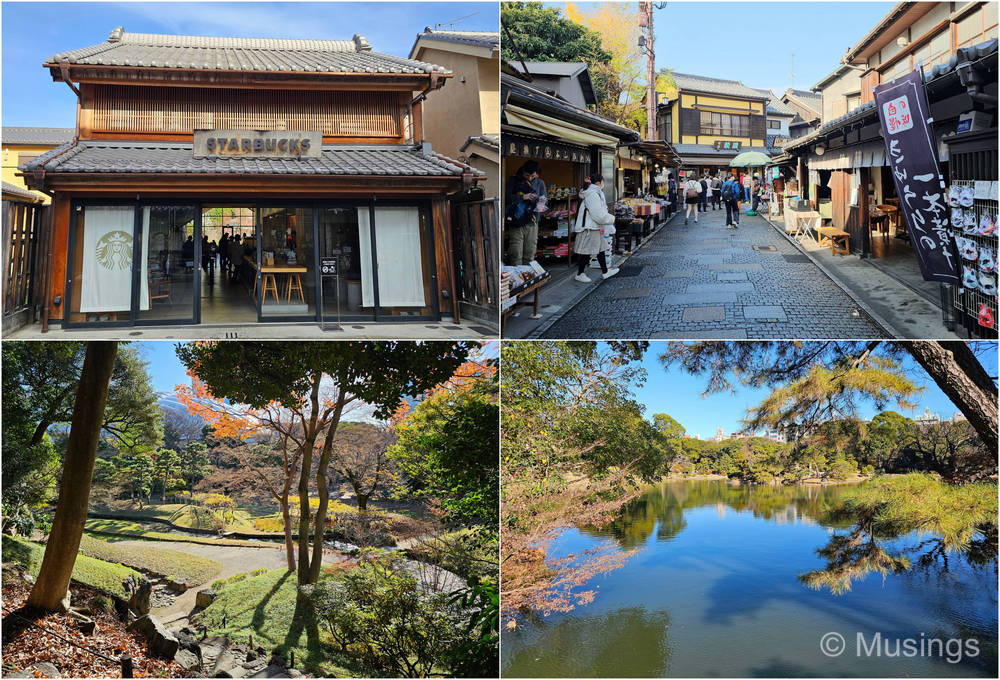
Day 10 (Tokyo)
Koishikawa Korakuen Garden (1 hr+) [blog post here]: This is a hidden gem that is well out of most international visitors’ radar and thus itinerary. It’s not a compact Japanese garden, but occupies a fair bit of space and is conveniently situated beside Tokyo Dome City, and 5 minutes walk from Suidobashi Station. There are certainly prettier gardens than this in Japan. But Koishikawa Korakuen has the advantage of being uncrowded. We benefited too from some lovely autumn colors from the flora in the mid-morning we visited. That said, I don’t think visitors to Tokyo would want to go out of their way just to visit this garden: but if you’re in the general area, you can swing by for an hour if you can spare the time.
Rikugien Garden (1 hr+) [blog post here]: The second garden we visited on Day 10 morning. This one saw comparatively more visitors, and likely because it was late morning when we reached this garden. It’s also relatively better-known, especially as a spot for wedding photography. The garden has more of the familiar landscape traits you commonly find in a Japanese garden, but it’s not exactly compact either. Between this and Koishikawa Korakuen above and if you absolutely have to choose between the two: go with Rikugien Garden if you’d like to see a traditional Japanese garden, and Koishikawa if you value serenity more than anything else. Finally, if you’d already visited the (world) famous landscapped Japanese gardens in Okayama and Kanazawa, then neither of these two gardens would wow you.
Yanaka Ginza (1 hr) [blog post here]: This is a cat-themed shopping street that is very popular with locals. Traditional shopping streets while apparently gradually fading out in popularity among younger Japanese are still fairly common from an itinerary perspective of an international visitor, but we didn’t spend that much time here. Unless you’re looking for cat-ty apparel and toys, I reckon it’s OK to give this a miss unless you need filler activities for your itinerary.
Akhibara Electric Town (1 hr+) [blog post here]: This is a place for geeks who love technology, anime and manga to nerd out. And even if you’re not, you should still go by on a weekend and enjoy the atmosphere. Better still, go on a Sunday afternoon when the main road is closed to vehicular traffic and feel like you own the place!
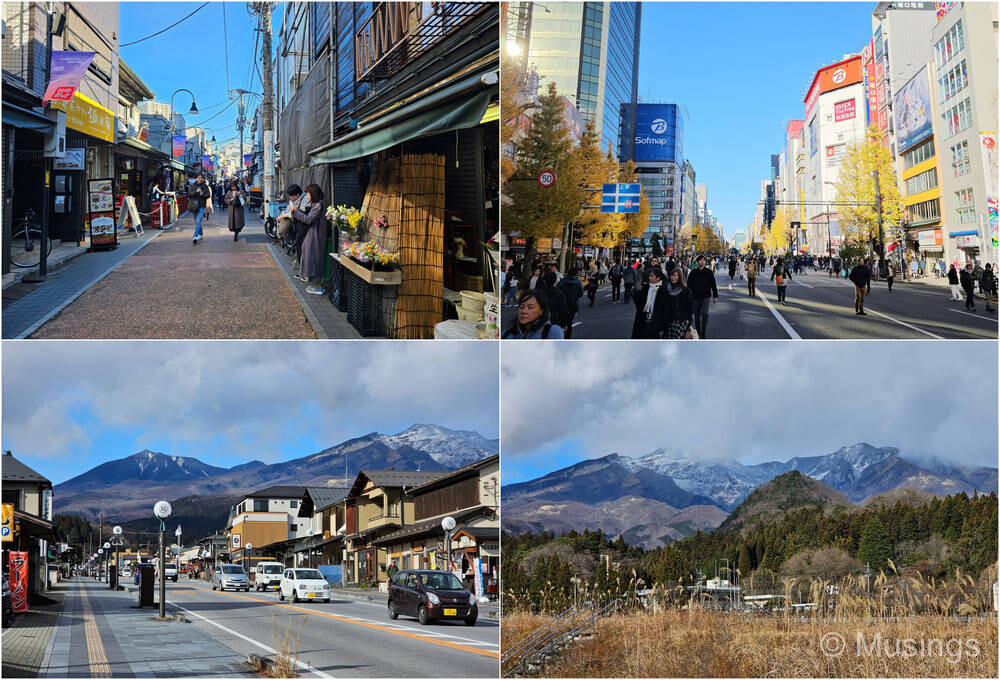
Day 11 (Tokyo – Nikko)
Nikko (2 Days) [blog post here]: Most visitors would visit Nikko as a day-trip out of Tokyo that’s 2.5 hours away. But many travel web sites recommend at least a night stay in this scenic town. Thing is: if you’re just visiting Toshogu Shrine and also Shinkyo Bridge, then you really don’t need that much time: 2 hours for both places is more than sufficient, and that includes time for you to thoroughly explore Toshogu Shrine. Pro-Tip: if you’re spending the night, pay close attention to opening hours of dining establishments in order to get fed, and also the location of the Family Mart store along the main road in the worst case scenario.
Tamozawa Imperial Villa (1 hr+) [blog post here]: This is a lovely villa and we’re glad we included time to check it out, but it’s also finally the kind of place that you’d enjoy only if you appreciate the history of the place and how Japanese royalty lived. The exhibits are viewing only and of the Do-Not-Touch kind, so kids might be super bored. Pro-Tip: if you’re including Tamozawa Imperial Villa in your itinerary, then you might still be able to squeeze this place and also Toshogu Shrine and Shinkyo Bridge below, all within a day-trip: 3-4 hours to visit all three places.
Toshogu Shrine and Shinkyo Bridge (1 hr+) [blog post here]: So far in our family trips to Japan, we’ve normally not entered into the interiors of shrines and temples if they require paid admissions [completely different story if it’s free, as in our 2022 visit last year to Engyoji Temple, blogged here.]
Day 12 (Nikko)
Nikko Edo Wonderland (4 hrs+) [blog posts here and here]: Our key itinerary activity and main reason for spending two nights in Nikko. Basically, if you’re not intending to visit this theme park or the onsen area in Nikko, then in our opinion, there’s no reason to spend a night in Nikko then if you’re looking to visit as many places as possible in a Japan vacation. This was a wonderfully done-up theme park that we regret not spending more time in it [we stayed in the park for about 4 hours]. Do pay attention to the free bus timings that bounce between JR Nikko Station and Edo Wonderland. You might be anxious like us in initial planning about how infrequent the free buses are running and whether the buses could possibly get very crowded. On that, our own experience was anything but: there was barely anyone on the free bus traveling out from JR Nikko Station and likewise for the return journey. This doesn’t however mean that the park can’t get crowded: there was a fair number of persons from late morning onwards, and most seemed to have come in tour buses. Pro-Tip: the Ninja show is an absolute must watch, so prioritise this show above the others.
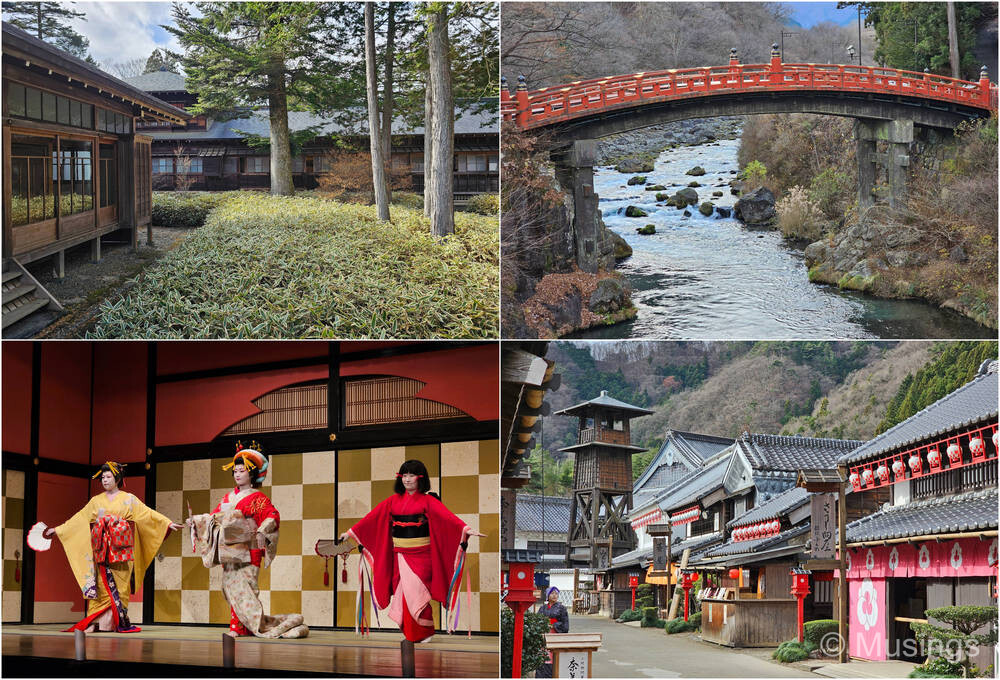
Day 13 (Matsumoto)
Matsumoto Castle and Nawate Street (2 hrs) [blog post here]: If you’re visiting Nagano and looking for a city to stay in as a base, then Matsumoto is an alternative you could consider. The city itself is a good balance of life and not being too busy at the same time, and the station proximity has a large number of restaurants, and the modern affordances like McDonald’s, MOS Burger and Starbucks are also located around the station too. Matsumoto Castle is a lovely building surrounded by a moat, and you can get great pictures of the castle from across it. Nawate Street on the other hand was pretty lifeless. Sure, the shops were opened, so if you’re browsing for frog-theme items in the total absence of crowds is your thing, then the street is worth spending a small amount of time in.
Day 14 (Matsumoto)
Daio Wasabi Farm (2 hrs) [blog post here]: If you love wasabi as a spice, then this is the farm for you. If you’re staying in Matsumoto, then this farm is an easy recommendation since it’s fairly easy to get to. If not, then my feel is that it’s more iffy whether you should take the trouble to make your way to it. The farm isn’t massive, and if you’re not interested in learning and seeing a wasabi farm and how the spice is harvested to begin with, then no, you wouldn’t want to include this, even as filler itinerary.
Matsumoto Castle Winter Illumination (0.5 hrs) [blog post here]: This is a must-visit if you’re in Matsumoto. Better still, visit Matsumoto Castle and explore the interiors over a mid to late afternoon [admission fee is required], then have dinner in any one of the fine local Japanese cuisine restaurants in the immediate vicinity, then come back in the early evening for the light-show.
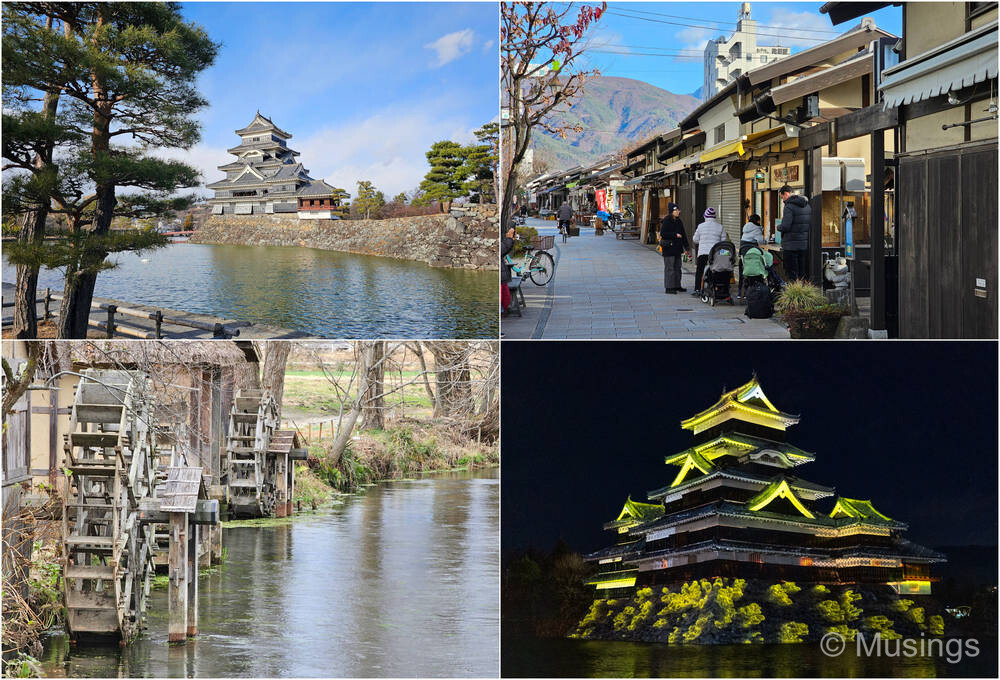
Day 15 (Matsumoto)
Norikura Kogen Snowshoe Hike (3 hrs) [blog post here]: We really enjoyed this one, on account that this was the first hike we’ve done wearing snowshoes. Sure, it was tough, but we had that incredible sense of wandering through a majestic forest in winter, and the partially frozen waterfall after the one hour hike was awesome to observe. Do note though that this was a guided hike that we engaged a local company specialising in these hikes, but the fee we paid was modest. The hike itself isn’t long, but walking over snow using snowshoes is, unless you’re coming from a country where you do this sort of thing on a regular basis!
Day 16 (Nagano)
Shiga Kogen and Kumanoyu Ski Area (3 hrs) [blog post here]: The Shiga Kogen and Kumanoyu Ski Area were included in our Snow Monkey day trip package, but whether you want to spend half of your day trip with snow activities could be a very different decision from ours; there are different options, since most packages won’t just do the Snow Monkey park only. We were well taken care of by the guide in our day trip, and group of 14 with Singaporeans making up two thirds of it was very well behaved and complied with timings, and we all enjoyed ourselves thoroughly.
Jigokudani Snow Monkey Park (2 hrs) [blog post here]: This is one of those places which you probably want to visit at least once in your life-time, even if the Internet is replete with videos from a lot of other persons who’ve visited the park, and the experience is well-reported. You’d want to allocate around 1.5 to 2 hrs for the visit, of which an hour would be spent for you to walk the trail to the monkey bathing pool, and back. 30 minutes to an hour inside the pool area itself is sufficient, after which you would have probably seen enough since apart from the monkeys bathing in the pool, fighting over food and scurrying around, there’s little else to observe.
Pro-Tip: two tips. Firstly, the best all-round lens to use in this compound would be 70-20mm f2.8, or 50mm to 75mm primes if you got them [you can crop the pictures as need later]. Secondly, make sure you are wearing proper footwear, especially if you’re visiting in winter. The trail is no joke: it’s not long at 1.6km each way, and not just muddy – which is fine albeit it can make a mess out of your pants – but also slippery, which is dangerous.
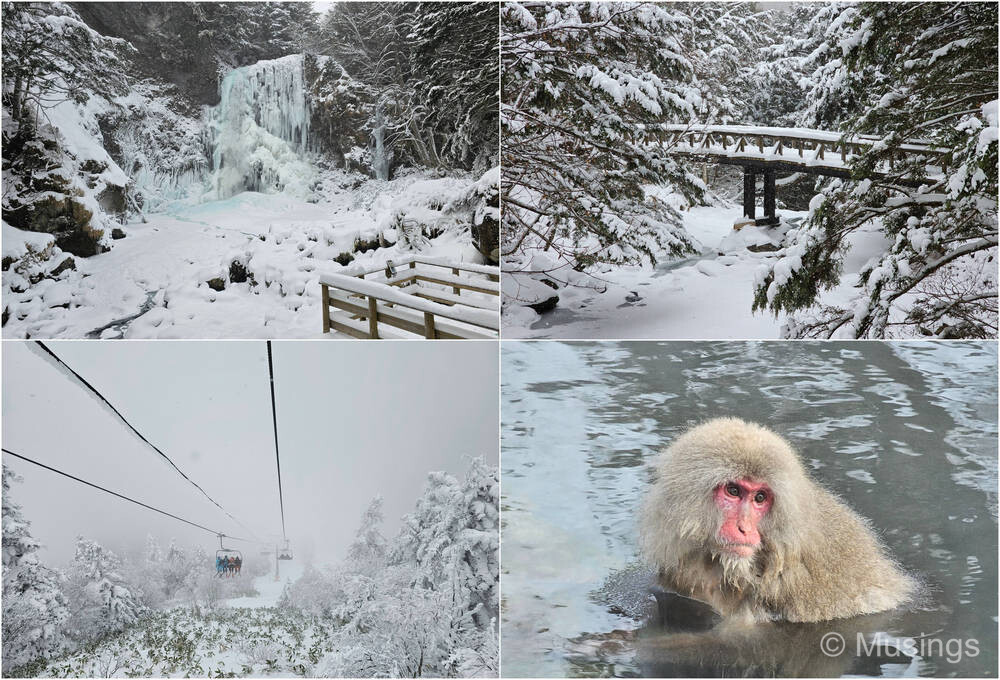
Day 17 (Matsumoto – Tokyo)
Ueno (3 hrs) [blog post here]: We stayed in Ueno for our last night in Tokyo, largely because we would be leaving from Narita on a 10AM flight, and planned to reach the airport early in the morning. The Skyliner express train to and fro Narita stops at Ueno, so we chose a hotel that was right opposite Keisei-Ueno Station where the Skyliner departs from. Beyond that, Ueno is an interesting district with a very large park that is visited by many locals, a couple of museums, and also Ueno Zoo. We’d make a mental note to spend more time in Ueno the time time we’re in Tokyo.
Day 18 (Tokyo – Singapore)
Returning home: our 7hr 40 minutes Christmas Day flight home from Narita was uneventful. We experienced none of the scarily long queues that other Singaporeans had been reporting when departing from Haneda and Kansai International airports. For us, the entire departure process at Narita was painless and fast: from our printing of boarding passes and luggage tags, followed by baggage drop-off, then clearance at departures entrance, scanning of carry-on bags, and finally immigration. Every time chop chop was done in 30 minutes from the moment we arrived at Narita Airport to our reaching the boarding gate. Pro-Tip: the SQ check-in row is at the South Wing.
>>>
Next, we’re doing two sections for our rating of places: one for where we got the best views of Mt. Fuji, and the other – normal – one where we divide the places we visited into ‘Must See’, ‘Should See’, and ‘Add only as Filler’. LOL.
| Category | Places |
|---|---|
| Must see/visit | Chureito Pagoda, Shimoyoshida Honcho Street, Lake Kawaguchi Sightseeing Boat Ride, Panorama-dai Lookout, Lake Yamanaka, Enoshima Island (Sea Candle, Iwaya Cave, Winter Illumination at Samuel Cocking Garden), Arashio-beya Sumo Stable, Mt. Takao, TeamLab Planets, Koishikawa Korakuen Garden, Rikugien Garden, Akhibara Electric Town, Tamozawa Imperial Villa, Shinkyo Bridge, Nikko Edo Wonderland, Matsumoto Castle, Winter Illumination at Matsumoto Castle, Norikura Kogen Snowshoe Hike, Shiga Kogen and Kumanoyu Ski Area, Jigokudani Snow Monkey Park. |
| Should see | Mt. Fuji Panoramic Ropeway, Fuji-Subaru Line 5th Station, Tokyo Dome City, Cat Cafe Mocha Harajuku, Shibuya Scramble Crossing, Small Worlds Tokyo, Tokyo Station, Marunouchi Winter Illumination, Kawagoe (Kawagoe, Temples, Kanetsuki-dori Street, Candy Street), Daio Wasabi Farm. |
| Add only as Filler | Fuji Q Highland, Nagaike Water Park, Shin Okubo, Takeshita-dori Street, Tokyo Dome City Winter Illumination, Samuel Cocking Garden, Shibuya Blue Cave Winter Illumination, Yanaka Ginza, Toshogu Shrine, Nawate Street (Matsumoto). |
That’s it for our itinerary and visitation notes, as it was realized in the actual trip. We were pretty happy that we were able to hit about 90% of our planned itinerary: this was a far higher achievement rate compared to last year’s trip to the Kansai area where a number of activities had to be dropped because of inclement weather.
Next post: pictures of flora in Japan, courtesy of the wife!